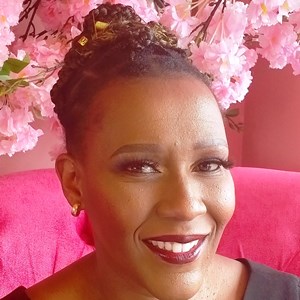Introduction
Dr Mutunga was the first Chief Justice under the Constitution 2010. Kenya promulgated the Constitution on August 27, 2010 and Dr Mutunga took his oath of office as Chief Justice on June 20, 2011. I think it is significant that he took his oath on the same month as his birthday and on the same month he was sworn in as an advocate of Kenya. Whether one calls it serendipity or the stars aligning or providence, it is instrumental that Dr Mutunga, one of the crusaders for reforms, led the Judiciary. This was a time when the burden thrust upon him was establishing a new constitutional order. Dr Mutunga started the Judiciary on this journey and he passed on the baton to Chief Justice David Maraga who then passed it on to the current Chief Justice Martha Koome.
In this article, I seek to give an account of what it was like to serve under Dr Mutunga when he was Chief Justice. I was humbled to work with him through the Judiciary Transformation Secretariat and the Judiciary Training Institute. The next few paragraphs look at his impact and legacy through living out his values,
through his lens of lifting as we climb, shifting mindsets and then bringing all this to a conclusion.
Living out values
I first heard of Dr Mutunga when he applied to be Chief Justice. It may seem strange to some that I never knew about his involvement in the constitutional reform movement. But it says a lot about how our history is taught and the information that made headlines in the late 1980s and 1990s.
I was serving as magistrate in a village town in 2011 when the interviews for Chief Justice were going on. The buzz around Dr Mutunga during his interview was not about his qualifications or even his reform agenda for the Judiciary. It was his earring!
What stood out for me was his response to the question posed on whether he would take off his earring if appointed as Chief Justice. His reply if my memory serves me correct was that he would not take the job if asked to remove his earring. At the time this answer seemed fastidious. After all it was only an earring. But it was not about his earring as I later understood while working with him. It was fundamentally about his values and what was important to him. Asking him to change his looks to fit into a job was not acceptable to him. To me his answer proved to be a symbol of his character as Chief Justice. He remained steadfast to his values with justice and wananchi at the centre of his decisions.
Lifting as we climb
A hallmark of Dr Mutunga’s key reforms is what he did for the judicial staff. The judicial staff are all the employees working in the Judiciary who are not judges or magistrates or kadhis. He was committed to ensure that all the staff are well remunerated. This was not the case when he became Chief Justice. Together with the team around him, Dr Mutunga pushed for an increase in the salary from the lowest cadre and all across the ranks of the judicial staff. This pledge to increase the salaries became a topic of conversation at the ‘Transformation Workshops’ (more about this below). At one point after more than six months of talking about this salary increase with no results, cynicism, disappointment and resignation set in amongst the staff. But in March 2013, the pledge was fulfilled and even backdated to the time when the initial pledge was made. It was a wonder to behold the joy and motivation for the judiciary staff. Together with the increased salary came opportunities to purchase a car through a car-loan scheme and also access to a mortgage facility. In one fell swoop within less than one year, two of the basic needs from Maslow’s hierarchy of needs were met. These were the psychological and safety needs. But Dr Mutunga moved beyond increasing salary to shifting mindsets.
Shifting Mindsets
The shifting of mindsets was across all levels of the Judiciary. I will focus on two examples. Annually the judges meet to discuss and share ideas affecting them collectively. This meeting involves all judges from the Supreme Court, Court of Appeal, High Court, Environment and Land Court and Employment and Labour Relations Court. There is always a section given to the Chief Justice to address the judges. In this first meeting in August 2011, Dr Mutunga presented a paper touching on judges’ dressing with emphasis on the wigs and robe worn in court, vestiges from Kenya’s colonial past. Throughout his tenure as Chief Justice, the issue of the judges robing remained an ongoing debate. Some of the judges stopped wearing the wigs but it would not be fair to say it was a direct result of Dr Mutunga’s paper. However, it did shift the needle just a bit.
Dr Mutunga’s ideas on changing the Judiciary were refined by a team under the Judiciary Transformation Secretariat (JTS). This team distilled the ideas into a framework titled the Judiciary Transformation Framework. Its theme which became a clarion call during Dr Mutunga’s tenure was, ‘Laying the foundation for the transformation of the Kenyan Judiciary’. In order to ensure these ideas were internalized by all employees in the Judiciary, JTS organized a series of Transformation Workshops per court station according to the different regions in Kenya. The workshops took place over three days. Essentially, these were change management sessions designed so that each employee could see and play their part in the transformation of the Judiciary through their daily work. Did the workshops bear fruit? To some extent they did and this is borne out by the fact that the Judiciary enjoyed a high level of confidence from the public. This plummeted with the outcome of the Presidential Petition in 2013. But it is the nature of the cycle that presidential petition outcomes alter public confidence in the Judiciary as history has shown for example in the 2017 and 2022 presidential petition outcomes.
Besides sharing ideas, Dr Mutunga was also open to ideas and innovative ways of executing tasks. It was during his tenure that the Advocates’ Admission moved from being held in a court room where only the lawyers could fit, to being held in a tent where the lawyers and their loved ones could witness the crowning achievement of becoming an advocate. The numbers of lawyers also increased dramatically. Dr Mutunga was open to the idea of the lawyers taking their oaths collectively. He was also open to the idea of different members of society coming in as ‘special guests’ to urge the newly admitted advocates not to forget the society they came from. These guests included among others the musicians Julinani and Eric Wainaina, activist Boniface Mwangi and comedian Daniel Ndambuki also known as ‘Churchill’. Before he became Chief Justice, as Chief Justice and even now as retired Chief Justice, Dr Mutunga continues to be an inspiration.
Conclusion
Inspiring the next generation is a core value that I see in Dr Mutunga’s life. His commitment to document and leave footprints for Kenyans that uphold ideals similar to his, I find is commendable. In a society driven by ostentation, greed and acquiring power for personal aggrandizement, it is comforting to know that there are leaders in Kenya like Dr Mutunga. Those who hope for and believe that Kenya’s future is bright should support these leaders who are committed to walk the talk and pay the price to leave Kenya a better place than they found it. I am humbled to have served under the leadership of Dr Mutunga, a studded Chief Justice.





